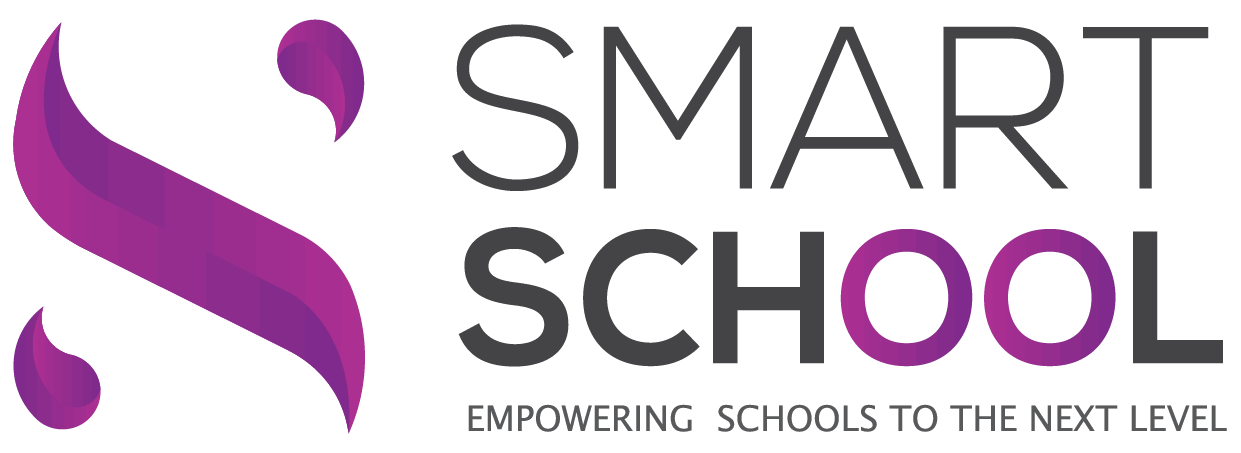Yes, a Student Management System may be accessible from various devices and platforms. With technological advancements and cloud-based systems, students may access their data and information from any device, including a laptop, tablet, or smartphone. This allows students to keep organized and up to date on the road, while also making it easier for instructors and administrators to access and manage student data across several devices and platforms.
List of 20 Best Student Management System
TrackIdON - a budget-friendly and comprehensive Student Management software that effortlessly brings together Parents, Management, and Students through both Mobile and Web platforms. With features such as academic and non-academic information, a Comm...Read More TrackIdON-Student Management software
DSO School 2.0 - the leading management software designed for educational institutions. Keep student records organized, simplify accounting and inventory management, and easily monitor fee payments with our comprehensive reporting system, including b...Read More DSO School 2.0
Quick Campus is an innovative education management software that offers a comprehensive solution for schools and colleges. Its intuitive modules for admissions, enrollment, attendance, and fee management help streamline daily operations. Say farewell...Read More Quick Campus
Alma, the most advanced Student Information System for your educational institution. Our innovative platform is designed to transform your learning community. Say farewell to multiple systems and welcome a futuristic solution that addresses all your...Read More Alma
Aum School Automation System is the preferred choice for schools, with more than 1600 satisfied customers. Our comprehensive solution simplifies administrative tasks and streamlines school operations. By utilizing our software, schools can effortless...Read More Aum School
Jupsoft eConnect-K12, the premier School ERP software that revolutionizes communication and administration in educational institutions. With a successful 15-year presence and a loyal clientele of 1000+ users worldwide, Jupsoft provides a holistic and...Read More Jupsoft eConnect
Fedena is a school management software utilized by schools worldwide to optimize their administrative, managerial, and learning processes. With its intuitive interface and extensive functionalities, Fedena simplifies school operations and empowers ed...Read More Fedena
Smart School - the leading ERP solution designed specifically for schools and educational institutions. With its advanced features and seamless integration with mobile applications, Smart School has become a trailblazer in School Management Systems...Read More SMART SCHOOL
OpenEduCat is a open source ERP solution tailored for schools, colleges, and universities. Our efficient cloud-based platform simplifies management of students, courses, faculties and classes, streamlining academic operations. With centralized studen...Read More OpenEduCat
Schoolbox solution for K-12 schools. Our comprehensive platform integrates modern teaching techniques, enhancing the learning journey for students and faculty. With our user-friendly LMS and School Portal, everyone stays engaged and informed througho...Read More Schoolbox
SEQTA Software is a learning management system specifically designed for schools. It includes features for student learning, wellbeing, and attendance, providing valuable data insights and promoting parental engagement. By simplifying administrative...Read More SEQTA Software
Shubhra School Management solution for seamless school operations. Our offline software offers a complete range of essential features for efficient management, from attendance monitoring to grade tracking. Say goodbye to tedious administrative tasks...Read More Shubhra School Management
Smart Classes solution for managing tuition and coaching classes. This cutting-edge software comes with a built-in online learning system, making it easier for users to access the platform from any web or mobile devices, including Android and IOS. Wi...Read More Smart Classes
Unit4 Student Management - a solution to simplify and enhance student management in educational institutions. This highly efficient software seamlessly integrates with existing systems, reduces costs, and offers a mobile interface for students. With...Read More Unit4 Student Management
Experience efficient student data management with eduZilla, the top solution in India. Our highly customizable software is designed to meet all academic needs. Simplify tasks like inquiry management, fee collection, attendance, and grading with ease...Read More eduZilla
Innate Infotech School Management System solution for optimizing school functions. Our all-in-one software offers advanced features like Time Table, Attendance, Examinations, Gradebooks, News, Hostel, Library, and Transportation, all in a seamless in...Read More Innate Infotech - School Management System
Edufar School Management, the premium web-based ERP solution for educational institutions. Simplify all your school operations, from admissions to generating certificates, with our comprehensive software. With Edufar, you can bid farewell to manual p...Read More Edufar School Management
WPSchoolPress! Our student management system simplifies your schools management by providing a user-friendly platform with a live demo feature. Create multiple user profiles and track all data transfers in one centralized location. Take charge of gra...Read More WPSchoolPress
Edumarshal is solution for turning your educational institution into a modern eCampus. It offers a wide range of tools and features specifically designed for schools, colleges, universities, and training institutes. Explore our free demo to discover...Read More Edumarshal
UDTeSchool, a educational software that integrates mobile and web applications to simplify and digitize all school processes. With its user-friendly interface and wide accessibility, our system offers a seamless platform for all stakeholders. Replace...Read More UDTeSchool
Learn More About Student Management System
- What is Student Management System?
- What Are the Recent Trends in Student Management System?
- Benefits of Using Student Management System
- Important Factors to Consider While Purchasing Student Management System?
- What Are The Key Features To Look For In Student Management System?
- Why Do Businesses Need Student Management System?
- How Much Time Is Required To Implement Student Management System?
- What Is The Level Of Customization Available In Student Management System?
- Which Industries Can Benefit The Most From Student Management System?
- Conclusion
What is Student Management System?
The Student Management System (SMS) is a comprehensive piece of software meant to expedite administrative processes while also improving communication and collaboration among students, parents, teachers, and school officials. It is a comprehensive solution for managing a student's academic path, from enrollment to graduation. The primary goal of a Student Management System is to consolidate and automate all operations involved in a student's academic career.
This includes collecting student information, managing enrollment, tracking attendance, compiling grades and assessments, and creating reports. By automating these activities, SMS saves time and reduces human error. An SMS provides various benefits to a buyer. It enables the efficient and effective management of student data, including contact information, medical records, attendance records, and academic progress.
This information is easily accessible to authorized individuals, making it easier to track student performance, spot patterns, and make data-driven decisions. SMS also facilitates communication among students, parents, and teachers via built-in message systems or portals. This promotes timely and transparent communication, resulting in increased parent participation and student success.
An SMS can also include tools like online gradebooks, assignment tracking, and academic calendars, which provide students and parents with real-time updates on their academic performance. Furthermore, a Student Management System can be tailored to the specific requirements of a learning institution, such as elementary schools, high schools, colleges, and universities. It can integrate with other systems within the school, such as an accounting or learning management system, resulting in a more efficient flow of information and fewer duplicate data entry.
What Are the Recent Trends in Student Management System?
In recent years, there has been a substantial shift in the education sector toward the use of technology for a variety of objectives, including student management systems. With the increased usage of digital platforms, student management systems have also evolved, becoming more efficient and user-friendly.
Let's explore, we'll look at the latest innovations in student management systems that are influencing the future of education.
1. Cloud-Based Solutions: One of the most noticeable trends in student management systems is the transition to cloud-based solutions. These systems have various advantages, including easy accessibility, scalability, and cost-effectiveness. Cloud-based solutions enable schools and colleges to store and retrieve student data, attendance, grades, and other critical information from any device with an internet connection.
2. AI Integration: Another developing trend in student management systems is the incorporation of artificial intelligence (AI). This technology is used to automate a variety of administrative operations, including report generation, class scheduling, and student data management. AI-powered student management systems may also analyze data and provide insights to instructors and administrators, allowing them to make more educated decisions.
3. Mobile Applications: The usage of mobile devices has become widespread, and student management systems are not far behind in capitalizing on this trend. Many student management systems now provide mobile applications, allowing parents, students, and teachers to access information while on the go. These applications allow parents to monitor their children's academic progress, teachers to provide comments, and students to view their schedules, assignments, and grades.
4. Individualized Learning: Each student is unique, and individualized learning is becoming increasingly popular in the education sector. Student management systems are being built to track each student's progress and meet their specific needs. These systems combine data analysis and artificial intelligence to build tailored learning programs for students, hence improving the learning process's effectiveness and efficiency.
5. Improved Communication And Collaboration: With student management systems, instructors, parents, and students may communicate and collaborate more effectively. These tools include texting, online discussion forums, and virtual classrooms, which help stakeholders communicate and collaborate more effectively.
Benefits of Using Student Management System
A Student Management System (SMS) is a comprehensive software solution built exclusively for educational institutions to manage and organize many elements of student data, including enrollment, attendance, grades, and even parent communication. This method provides several benefits to both students and educational institutions, making it an indispensable tool for modern classrooms.
Here are some of the main advantages of adopting a student management system:
1. Data Centralization: One of the most significant benefits of employing a Student Management System is that it consolidates all student data into a single repository. This means no more disorganized records or paperwork, making it easier for school administrators and teachers to access and manage student data. This improves efficiency and accuracy, saving significant time and effort.
2. Improved Communication: Clear communication among parents, instructors, and students is critical to a student's academic achievement. A Student Management System allows for seamless communication through features such as online messaging, virtual parent-teacher conferences, and real-time updates on student progress. This fosters a collaborative relationship among all interested parties, resulting in a favorable learning environment.
3. Improved Attendance Management: Manually recording student attendance can be laborious and time-consuming. A Student Management System automates attendance tracking, making it easier to identify and address attendance issues. It also provides parents with real-time information on their child's attendance, which promotes accountability and reduces absences.
4. Improved Grading And Reporting: Grading and reporting are critical components of education, and a Student Management System simplifies and streamlines the process. Teachers may swiftly enter grades and generate report cards, eliminating the need for manual data entry. This also provides for more accurate and timely reporting, which helps parents comprehend their child's academic progress.
5. Data Analysis For Better Insights: A Student Management System provides educational institutions with complete data analytics tools. This allows them to examine student data, spot trends, and make data-driven decisions to boost overall academic achievement. It also enables teachers to identify problematic kids and provide timely interventions.
6. Cost And Resource Efficiency: Investing in a Student Management System can be an affordable long-term solution for educational institutions. By eliminating paperwork, automating processes, and enhancing efficiency, schools can free up important resources for other instructional reasons.
Important Factors to Consider While Purchasing Student Management System?
When selecting a student management system, purchasers must examine a number of critical elements in order to make an informed decision.
Here are the four most crucial aspects to consider when selecting a student management system:
1. User-Friendly Interface And Navigation: One of the most significant considerations when selecting a student management system is ease of use. The interface should be simple and user-friendly, with quick access to many functions and options. This ensures that both administrators and students may access and use the system without difficulty or irritation.
2. Comprehensive Features: A good student management system should include a variety of features that address all aspects of student administration, including admission, grading, attendance, scheduling, and communication. It should also include aspects that meet the specialized demands of your institution, such as special education or extracurricular activities. Before making a purchase, thoroughly check the list of features to confirm that it meets your institution's needs.
3. Data Security: Given the growing concern about data privacy and security, it is critical to assess the security measures used by the student management system. The system should include strong security measures to secure sensitive student information, as well as compliance with the most recent data privacy legislation. It is also critical to question about data backup and recovery procedures in the event of system failure.
4. Scalability: When choosing a student management system, you should consider your institution's potential expansion. Will the system be able to accommodate an increase in student enrollment or future feature requirements? It is critical to select a scalable system that enables for easy customization and interaction with other software as your organization grows.
What Are The Key Features To Look For In Student Management System?
When searching for a Student Management System, there are several crucial elements to look for that can significantly improve your students' learning experience while also streamlining administrative work for your school. These elements are required for a comprehensive and effective system that serves the needs of both instructors and students.
To assist you make an informed decision, these are the essential elements to consider when selecting a Student Management System:
1. Student Data Management: A solid Student Management System should have a strong student data management system that facilitates and secures the storage, organization, and retrieval of student information. This contains personal information, academic records, attendance, and more.
2. Attendance Tracking: Tracking student attendance is critical for assessing student engagement and identifying at-risk pupils. Look for a system that provides a variety of tracking methods, such as RFID, biometrics, or mobile apps, to meet your institution's demands.
3. Gradebook And Progress Tracking: An excellent Student Management System should have a gradebook and progress tracking function that allows teachers to enter and track grades while also monitoring student progress over time. This can help identify areas where pupils may want more assistance and intervention.
4. Communication Tools: Look for a system that includes built-in communication tools like email, chat, and messaging to make it easier to communicate with kids, teachers, and parents. This can increase parent-teacher participation and keep pupils informed of critical announcements and deadlines.
5. Scheduling And Timetabling: A Student Management System should include scheduling and timetabling features that enable for easy preparation of classes, events, and exams. Look for a solution that allows for flexibility, customization, and automation to help you with this time-consuming chore.
6. Student Performance statistics: A system that gives detailed statistics on student performance can assist educators in identifying trends and patterns, tracking progress, and making data-driven decisions. Look for a system that provides customisable data and visualizations to help you better analyze student achievement.
7. Mobile Accessibility: With the advent of remote learning, it is critical to select a Student Management System that is mobile friendly. This enables students, instructors, and parents to access critical information and communication tools on the go.
8. Integration With Other Systems: A strong Student Management System should integrate seamlessly with other systems including Learning Management Systems, invoicing and accounting software, and communication platforms. This can save time and effort by eliminating redundant data entry and increasing efficiency.
When selecting a Student Management System, consider these essential qualities to pick a system that matches your institution's specific demands while also improving your students' overall learning experience. Make sure to carefully assess each feature before selecting a system that meets your needs and fits within your budget.
Why Do Businesses Need Student Management System?
A Student Management System, also known as a School Management System or an Education Management System, is software that is used to efficiently manage and streamline many areas of a school or educational institution. It provides a one-stop solution for managing student information, academic records, administrative chores, and communication among all stakeholders.
There are various reasons why organizations, especially schools and educational institutions, require a Student Management System. For starters, it makes complex administrative processes easier to understand and automates manual work. This not only saves time, but also lowers the possibility of errors and discrepancies. A Student Management System, which includes features like online attendance monitoring, grade management, and fee management, eliminates the need for manual record-keeping, making the entire process more efficient.
Second, a Student Management System offers a centralized platform for handling student information. Authorized users can simply access and edit all information, including enrollment and registration details, class schedules, and academic progress. This ensures that accurate and up-to-date data is always available, allowing for more informed decision-making.
Furthermore, a student management system improves communication among teachers, students, parents, and administrators. Parents may keep track of their child's academic achievement and other school-related activities using services such as a parent portal and online messaging. Similarly, professors can effectively connect with students and their parents, which improves general communication and collaboration inside the school.
A Student Management System also includes extensive reporting and analytics tools, which provide useful insights into student performance and school management. This enables firms to identify areas for development and make data-driven decisions that boost overall efficiency and performance. In today's digital age, having a dependable Student Management System is critical for firms in the education sector.
It streamlines administrative work while simultaneously improving communication, data management, and decision-making abilities. Investing in a comprehensive Student Management System can provide several benefits and assist organizations in meeting their aims of offering great education to students.
How Much Time Is Required To Implement Student Management System?
The time required to build a Student Management System (SMS) varies depending on numerous factors. These criteria include the institution's size, system complexity, and the level of customization required. A basic SMS can take between 3 and 6 months to implement, while a more complex and customized system can take a year or more.
This timetable comprises the initial design and consulting phase, system configuration, data migration, user training, and testing. During the planning phase, it is critical to establish the SMS implementation's goals and objectives, as well as identify important stakeholders and their responsibilities in the process. This period normally lasts 2 to 4 weeks. The next phase is system configuration, which entails configuring the SMS to meet the institution's needs and expectations.
This can take 4 to 8 weeks, depending on the system's complexity. Data migration is the process of moving existing student data from the old system to the new SMS. This is a vital stage that may take up to four weeks to complete. User training is vital for the SMS's successful uptake and utilization. This phase can last anywhere from 2 to 6 weeks, depending on the amount of users and their familiarity with technology.
Finally, testing is required to discover and resolve any faults or issues before the system can be fully implemented. This period can last 2 to 4 weeks. Overall, the typical time to implement an SMS from start to finish is 3 to 6 months. However, the actual timeline may vary depending on the institution's specific demands and requirements. As a result, it is critical to collaborate closely with the vendor and have a well-defined plan in place to ensure successful deployment within the required timeframe.
What Is The Level Of Customization Available In Student Management System?
When choosing a Student Management System (SMS) for your educational institution, you should examine the level of customisation offered. A well-customized SMS may offer a specialized and smooth experience to both administrators and students, resulting in a more efficient and user-friendly system. The software architecture is a crucial aspect in determining the extent of personalization in an SMS.
A cloud-based SMS provides more customisation than an on-premises solution. This is due to the cloud's versatility and scalability, which enable easier customization and updates. Additionally, the number of modules and functionalities provided by an SMS has a significant impact on its customization capabilities. A comprehensive system with a diverse set of features enables a more personalized experience.
When reviewing customisation, major modules to examine are student information management, attendance monitoring, grading, course management, and reporting. Furthermore, many SMS providers offer unique branding options, allowing institutions to incorporate their logos and colors into the system. This not only adds a professional touch, but it also makes students and staff feel more involved with the system.
Another aspect to consider is the capacity to add or remove functionality based on unique needs. A versatile SMS should allow administrators to tailor the system to their institution's specific requirements. This could include adding new fields, developing custom reports, or integrating with third-party applications. Furthermore, an SMS with role-based access control provides for additional customisation by allowing varying levels of access to various users. This ensures that only authorized users have access to specific functions and data, hence improving security and privacy.
Which Industries Can Benefit The Most From Student Management System?
A Student Management System, also known as an Education Management System, is a software system created to streamline and optimize academic and administrative procedures in educational institutions. This system consists of several modules, including entrance, enrollment, grading, attendance, scheduling, and communication, to name a few. While this system can benefit a wide number of enterprises, others can enjoy even greater benefits from deploying a Student Management System.
Let's explore, we'll look at which industries can benefit the most from this technology.
1. Educational Institutions: It goes without saying that educational institutions including schools, colleges, universities, and training centers can profit greatly from using a Student Management System. With an increasing number of students, these institutions encounter difficulties in conducting numerous academic and administrative activities manually. A Student Management System automates operations, minimizes paperwork, and improves efficiency, allowing educational institutions to focus on providing high-quality education to their students.
2. Corporate Training Firms: Corporate training firms provide numerous training programs to employees from various organizations. These businesses can benefit from a Student Management System since it enables them to manage training schedules, track employee progress, and monitor training requirements. It also assists in the generation of reports and certificates for employees who have completed training programs.
3. Online Learning Platforms: In today's digital age, online learning platforms are becoming increasingly prominent. These platforms might vary from massive open online courses (MOOCs) to private tutoring services. With a Student Management System, these systems can easily manage student enrollment, course materials, and progress tracking. It also helps students have a more seamless learning experience by combining with other e-learning resources.
4. Government Agencies: A Student Management System can help government agencies who are in charge of supervising educational institutions and their regulations. It allows them to monitor compliance, track progress, and provide performance reports for educational institutions. This data can be utilized to discover areas for improvement and make educated decisions in the educational sector.
5. Non-Profit Organizations: Non-profit organizations that provide educational services to underprivileged populations can benefit from using a Student Management System to better manage their operations. It enables them to efficiently manage their resources, track student development, and keep records to report to sponsors and stakeholders.
Conclusion
Finally, investing in a high-quality Student Management System (SMS) can significantly benefit educational institutions by reducing administrative work, boosting communication, and improving students' overall learning experiences. Before deciding on an SMS, you should thoroughly analyze your institution's specific objectives and goals.
Some important considerations are the features and functionality needed, integration possibilities with existing systems, scalability for future growth, and simplicity of use for both administrators and students. Before making a purchase, conduct careful research on the various options available, read reviews, and seek demos or trials to check that the SMS suits your needs.
Involving important stakeholders in decision-making, such as teachers, students, and parents, can also provide vital insights and assure implementation success. Once you've decided on an SMS, you must adequately train all users and examine and update the system on a regular basis to reap the most benefits. With the correct SMS in place, educational institutions can improve efficiency, communication, and student performance.
Student Management System FAQ's
Can Student Management System Be Accessed Across Multiple Devices And Platforms?
Is Student Management System Future-Proof And Adaptable To Emerging Technologies Like AI, Blockchain Or IoT?
Yes, the Student Management System (SMS) is future-proof and adaptable to upcoming technologies such as AI, blockchain, and IoT. SMS is built with an open architecture that enables for easy integration of new technologies. Furthermore, most SMS providers upgrade their systems on a regular basis to reflect the most recent technological breakthroughs. This guarantees that the software is both relevant and responsive to the changing needs of educational institutions.
Is There A Free Trial Offered To Assess Student Management System Before Committing?
Yes, several student management systems include a free trial period before you commit to a membership. This enables schools or educational institutions to evaluate the system's features and functionalities and assess whether they satisfy their specific requirements. It also allows for an assessment of the system's usability and efficiency. It is recommended that you use a free trial before buying in a student management system.
Does Student Management System Offer Data Security Features And Meet Regulatory Compliance Standards?
Yes, Student Management System provides powerful data security measures and assures regulatory compliance. It protects critical student data with encryption, access restriction, and regular backups. It also adheres to tight criteria established by regulatory agencies like as FERPA, GDPR, and COPPA to protect the privacy and security of student data. Rest assured that your data is secure and treated with the highest care.
Can Student Management System Integrate Seamlessly With Existing Tools And Platforms?
Yes, most Student Management Systems (SMS) are built to work easily with other tools and platforms, such as learning management systems, payment systems, and academic software. Administrators, teachers, and students benefit from having access to all relevant tools and data in one location, saving them time and effort. SMS connectivity also provides a uniform user experience across several devices, making it easy to manage and track student progress.






















